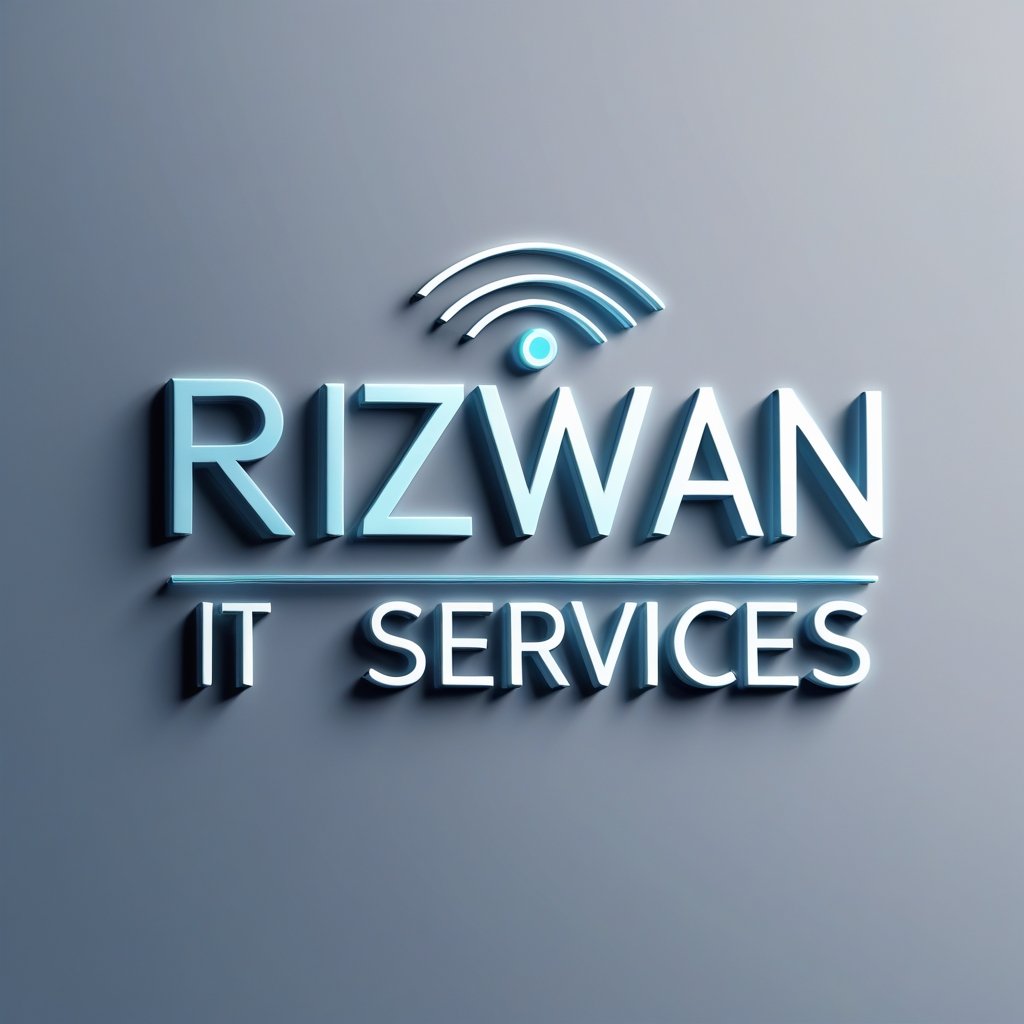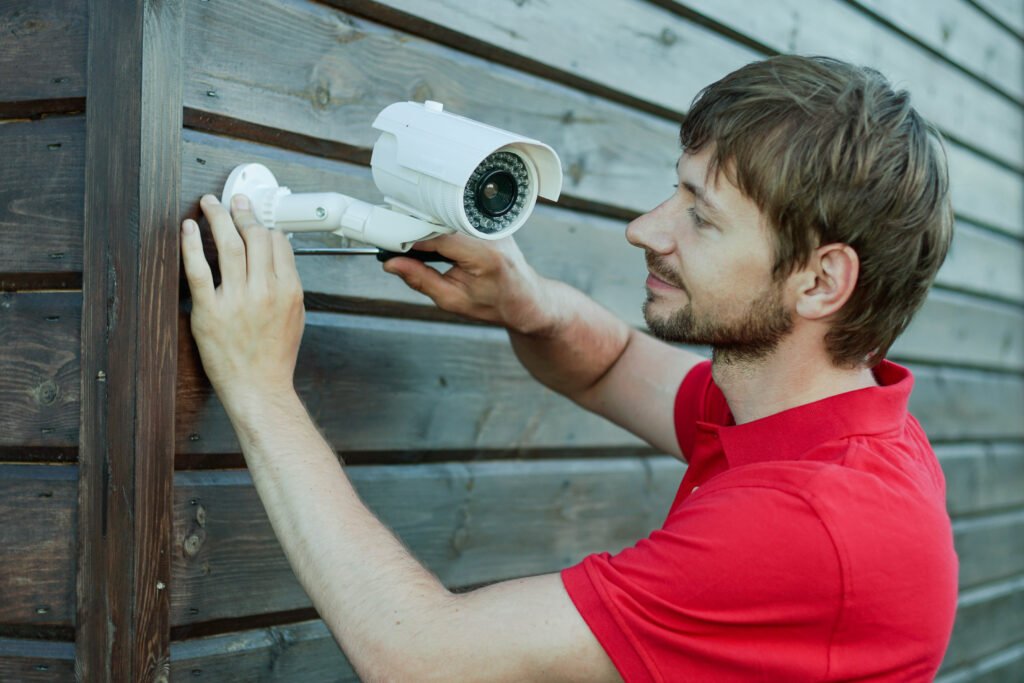
CCTV CAMERA INSTALLATION DUBAI CALL 0554317122
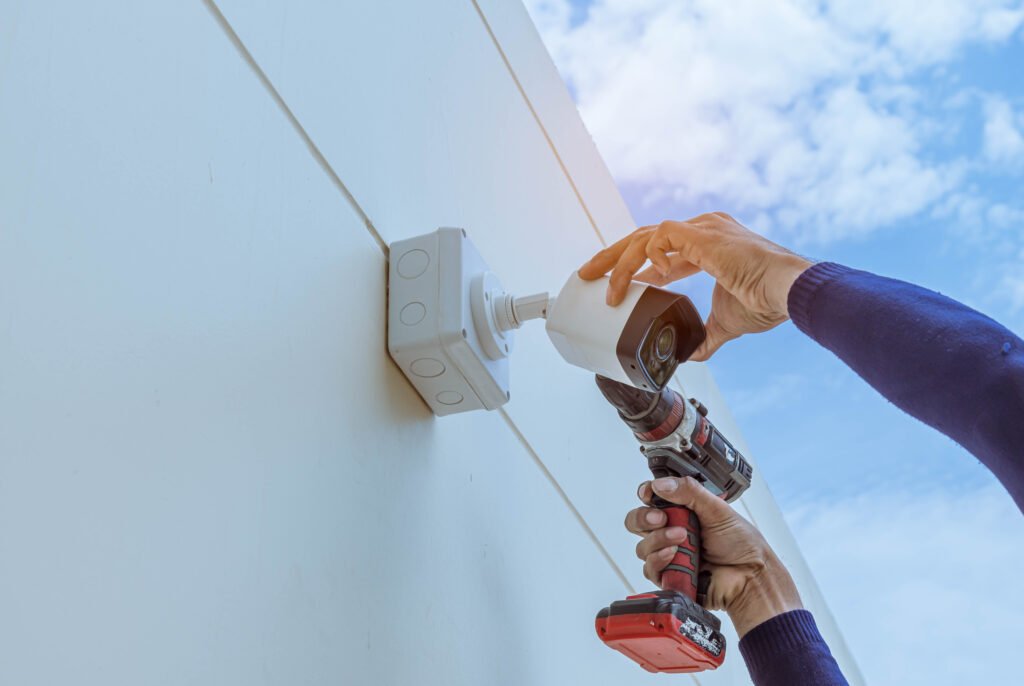
Introduction
Security camera services have become a vital part of ensuring safety and monitoring in various settings, including homes, businesses, public spaces, and governmental institutions. The advent of advanced technology has transformed how we think about security, enabling organizations and individuals to adopt robust surveillance systems that help deter crime, monitor activities, and provide crucial evidence when needed. call Rizwan it services
This document aims to delve into the concept of security camera services, exploring different types of systems available, their benefits, technological advancements, industry standards, challenges, and future trends. Understanding these elements will provide a clearer picture of why security camera services have become indispensable in the modern world.
1. Overview of Security Camera Services
Security camera services refer to the provision, installation, maintenance, and monitoring of surveillance systems. These services often include offering cameras tailored to specific environments, integrating the cameras into larger security systems, and ensuring their functionality through regular upkeep.
Security cameras can be employed in multiple sectors, from residential to commercial and industrial. Services also extend to ensuring cybersecurity for digital or cloud-based systems, especially as the rise of the Internet of Things (IoT) introduces connected smart security cameras.
2. Types of Security Cameras
Several types of security cameras are available, each designed to serve a particular purpose or environment. Some of the most common types include:
2.1 Dome Cameras
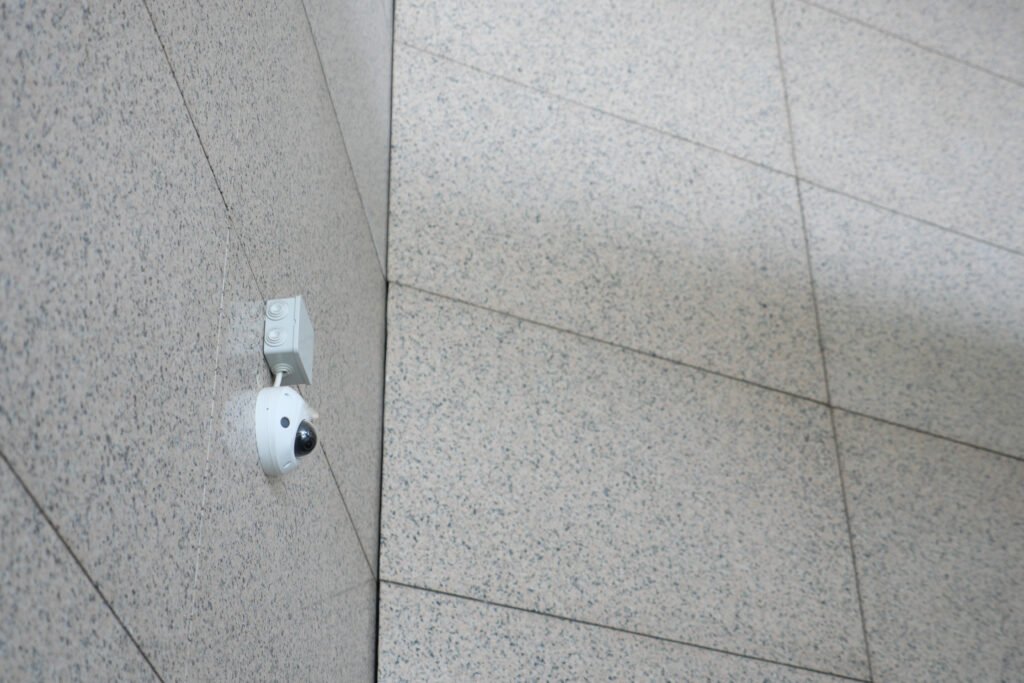
Dome cameras are often installed indoors and are named after their dome-shaped design. These cameras are discreet and often used in locations like retail stores, hotels, and office buildings. Their shape makes it difficult for observers to determine which direction the camera is facing, adding to their effectiveness as a deterrent.
2.2 Bullet Cameras
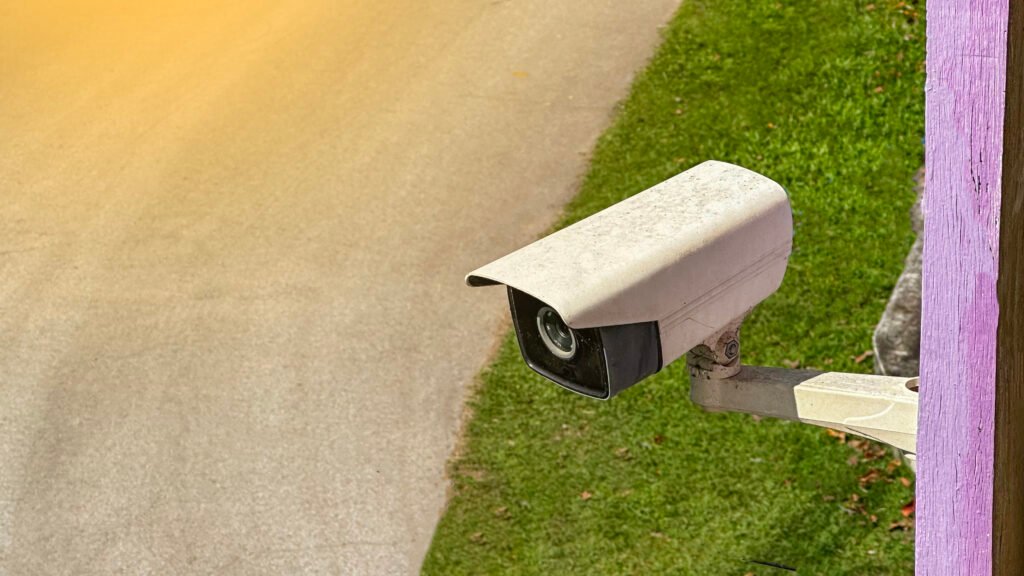
Bullet cameras have a long, cylindrical shape, making them more visible than dome cameras. They are typically installed outdoors to monitor large spaces like parking lots, streets, or industrial zones. Their design allows for longer-range focus and weather resistance.
2.3 PTZ Cameras (Pan-Tilt-Zoom)
PTZ cameras allow operators to control the camera’s movement—panning, tilting, and zooming—making them versatile for wide-area surveillance. These are commonly used in places like airports and stadiums where real-time control is necessary to track suspicious activities.
2.4 IP Cameras (Internet Protocol)
IP cameras are digital and capable of transmitting data over the internet. Unlike traditional analog cameras, IP cameras provide higher resolution and flexibility in storage and access. These cameras are popular in smart homes and businesses that rely on remote monitoring and cloud storage.
2.5 Wireless Cameras
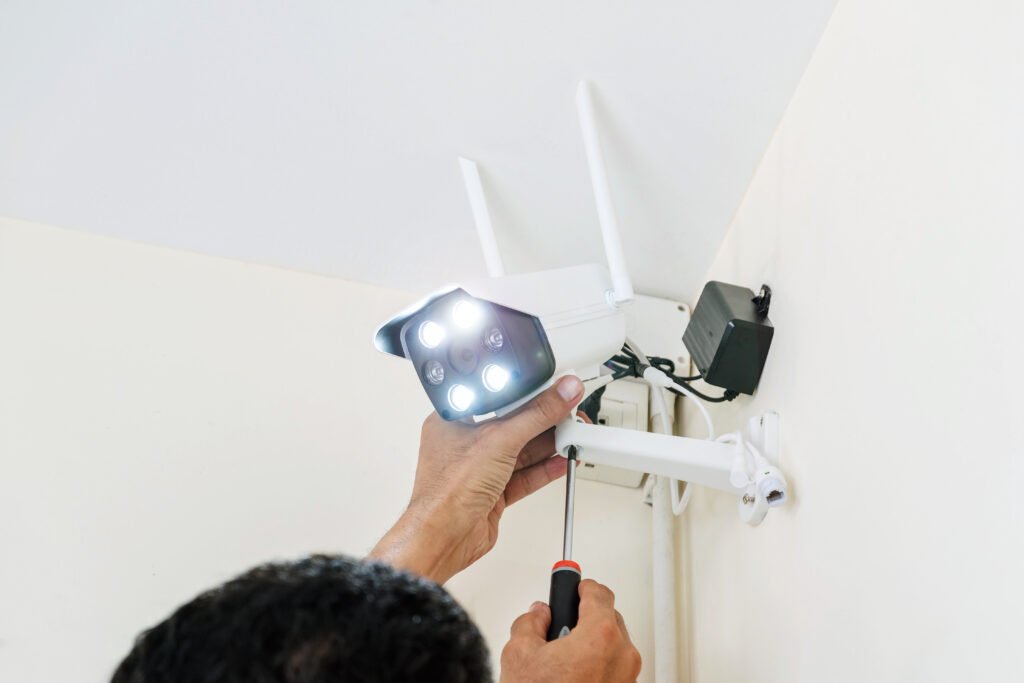
Wireless security cameras use Wi-Fi or other wireless technologies to transmit video to a receiver or a cloud-based storage system. These are convenient in locations where running wires is challenging or unwanted. However, they can be more vulnerable to hacking if not properly secured.
2.6 Thermal Cameras
Thermal cameras detect heat signatures instead of relying on visible light. They are used in critical applications like border control, military, or high-security areas where traditional cameras may fail under poor lighting conditions.
3. Benefits of Security Camera Services
Security camera services offer a range of benefits that make them valuable in both residential and commercial settings:
3.1 Crime Deterrence
The presence of visible security cameras acts as a deterrent for potential criminals. Studies show that homes and businesses equipped with surveillance systems are less likely to be targeted by burglars or vandals.
3.2 Real-Time Monitoring
Security cameras provide real-time monitoring, allowing homeowners or business managers to keep an eye on their property even when they are not physically present. With modern IP cameras, users can receive live feeds on their smartphones, tablets, or computers.
3.3 Evidence Collection
In the event of a crime, security camera footage often serves as crucial evidence. Law enforcement agencies frequently rely on surveillance videos to identify suspects, piece together timelines, and verify witness statements.
3.4 Improved Safety and Productivity
For businesses, security cameras help maintain a safe environment for both employees and customers. Cameras in workplace environments may also encourage productivity, as employees are aware they are being monitored, reducing incidents of misconduct or theft.
3.5 Reduced Insurance Premiums
Insurance companies often provide discounts to property owners who have security camera systems installed, as the risk of theft or damage is reduced. The presence of surveillance systems lowers liability, which may result in lower premiums.
4. Key Technological Advancements in Security Camera Services
The field of surveillance has seen major advancements driven by technology. These innovations have improved the quality of security camera services, making them more reliable, efficient, and user-friendly.
4.1 High-Definition (HD) and 4K Cameras
Traditional analog cameras often had grainy, low-quality images. However, modern security cameras now offer HD and even 4K resolution, providing crystal-clear footage that makes identification of faces and license plates much easier.
4.2 Artificial Intelligence (AI) and Machine Learning
AI-powered security cameras have made great strides in improving surveillance accuracy. These systems can detect unusual behaviors, recognize faces, and send alerts when suspicious activities occur. Machine learning algorithms can help cameras learn the environment they are monitoring, improving performance over time.
4.3 Cloud Storage and Remote Access
With the growth of cloud computing, many security camera services now offer cloud storage options, eliminating the need for physical DVRs (digital video recorders). Cloud storage allows users to access video footage from anywhere, at any time, providing convenience and peace of mind.
4.4 Night Vision and Low-Light Technology
Modern security cameras come equipped with infrared sensors or low-light technology, enabling them to capture clear footage even in complete darkness. This feature is critical for outdoor or dimly lit environments.
4.5 Smart Integration with IoT Devices
Security cameras are increasingly being integrated into smart home and IoT ecosystems. For example, security systems can now work in conjunction with smart doorbells, lighting, and alarms, creating a seamless and automated security network.
4.6 Video Analytics
Video analytics uses advanced algorithms to analyze security footage in real-time. These systems can detect motion, count people, recognize license plates, and even detect abnormal behavior, reducing the need for constant human monitoring.
5. Challenges Facing Security Camera Services
Despite the numerous benefits, security camera services face several challenges that need to be addressed:
5.1 Privacy Concerns
One of the primary challenges is the issue of privacy. As surveillance cameras become more prevalent in public and private spaces, concerns regarding invasion of privacy have grown. Critics argue that constant monitoring can lead to a “Big Brother” society where people feel watched and controlled.
5.2 Cybersecurity Risks
With the rise of internet-connected security cameras, there is an increased risk of hacking. Poorly secured cameras can be compromised, allowing malicious actors to gain access to live feeds or stored footage. This has raised the importance of cybersecurity measures in modern security camera systems.
5.3 Cost of Installation and Maintenance
Although security camera systems are becoming more affordable, high-end installations can still be costly. Additionally, maintenance expenses such as replacing faulty cameras, upgrading storage, or managing software subscriptions can add to the overall cost. for best price call Rizwan it services
5.4 False Alarms and Alerts
Advanced security cameras often come with motion detection and AI-based recognition, but these systems are not foolproof. False alarms triggered by pets, weather conditions, or shadows can overwhelm security staff or homeowners, making the system less efficient.
6. Standards and Best Practices for Security Camera Services
To ensure optimal performance and compliance with legal and industry standards, security camera services must adhere to a set of best practices:
6.1 Proper Camera Placement
Strategic camera placement is crucial for maximizing coverage and minimizing blind spots. Cameras should be placed at entry points, high-traffic areas, and any vulnerable points, such as windows or back doors.
6.2 Regular Maintenance
Regular maintenance of cameras and related equipment is essential for uninterrupted surveillance. This includes cleaning the camera lenses, checking connections, updating firmware, and ensuring that the system’s power supply is stable.
6.3 Compliance with Data Protection Regulations
Security camera services must comply with local, national, and international data protection regulations, especially when dealing with video footage that captures personally identifiable information. This includes adhering to the General Data Protection Regulation (GDPR) in the European Union and similar laws in other regions.
6.4 Encryption and Cybersecurity Protocols
To safeguard against cyberattacks, security camera systems should use strong encryption protocols for data transmission. Additionally, default passwords should be changed immediately upon installation, and regular security audits should be conducted to identify vulnerabilities.
7. Future Trends in Security Camera Services
As technology continues to evolve, the future of security camera services promises further innovations and improvements:
7.1 5G and Faster Networks
With the rollout of 5G networks, security cameras will be able to transmit data faster and more reliably. This will enhance real-time monitoring, especially in remote areas or places with limited broadband infrastructure.
7.2 Enhanced AI Capabilities
AI and machine learning will continue to play a major role in the future of surveillance. AI systems are expected to become even more sophisticated, enabling cameras to not only detect motion but also understand complex behaviors and scenarios.
7.3 Edge Computing
Edge computing refers to processing data at the “edge” of the network, closer to where it is generated (i.e., the camera itself). This reduces latency and allows for faster decision-making, which is crucial for applications that require immediate responses, such as real-time alerts for intrusions or dangerous situations.
